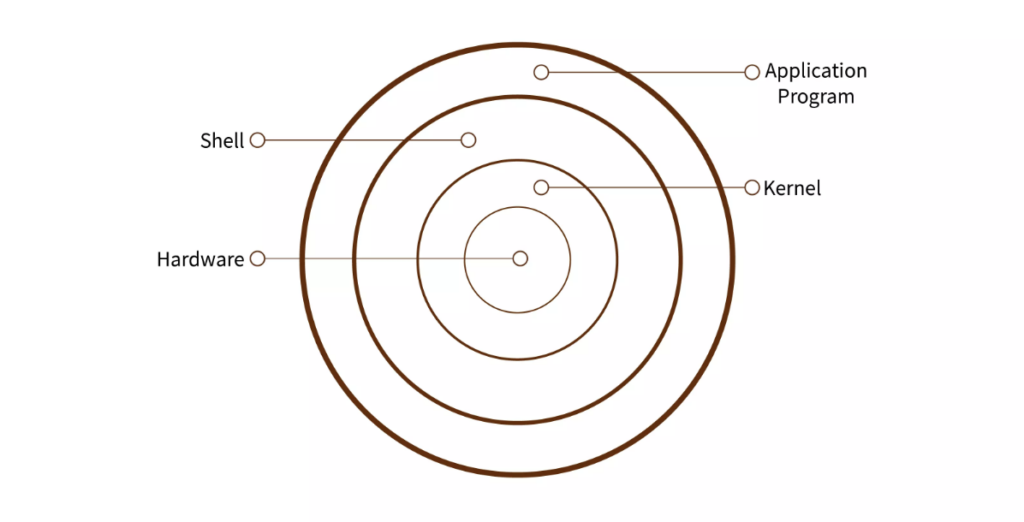Table of Contents
In this article, we are going to learn about Unix and It’s Function and Services.
An operating system is a system software that manages hardware and software resources and provides common services for computer programs. All computer programs require an operating system to function. There are different kinds of OS like windows, unix, MAC OS, MS DOS etc. But among this Unix is more secure OS which is used in many organizations and also it is open source.
Function of OS
The important functions of OS is
- managing the memory,
- managing the file,
- managing the process,
- managing the device and providing security.
What is Unix
Unix — trademarked as UNIX — is a multiuser, multitasking operating system (OS) designed for flexibility and adaptability. Originally developed in the 1970s, Unix was one of the first OSes to be written in the C programming language.
- UNIX is a multi tasking and multi user Operating system, i.e it enables two or more users to run program simultaneously also supports two or more processors running programs at the same time.
- It is more secured, when compare to other OS because UNIX has lower access rights, and, theoretically, the virus can only access local files and folders, and the system will remain safe but windows users by default have access to everything in the system because they are given administrator rights. If the virus able to penetrate their system, they can quickly gain access to important parts of the system.
- UNIX is distributed freely.
- It is an open source software.
- UNIX follows “Console – Terminal” architecture
- Console has the processing capability and many ports
- Terminals have monitors and keyboards but no processing capabilities
- The terminals are connected to the port of the console.
Unix Architecture
Unix operating system architecture is divided into four layers as given below:

- Hardware Layer: It contains the hardware-related information required for the functioning of the UNIX environment.
- Kernel Layer: The core (commonly known as the heart) of the operating system. It is a software application that acts as the interface between the hardware and the user. The kernel is responsible for handling the major functionality of the Unix Operating System including process, memory, file, network, etc.
Functions of the Kernel Layer:- Ensures that all the system and user tasks are executed concurrently.
- Acts as a device manager helping processes gain access to peripheral devices connected to the computer with the help of device drivers .
- Manages memory using techniques like paging, swapping, and virtual storage.
- Shell Layer: The interface between the user and kernel. It is a program that interprets/translates commands typed into the terminal into a series of commands that can be sent to the shell. This script containing commands is called a shell script. The shell is what keeps a history of commands typed in by the user. To repeat a command previously typed, you can simply click the scroll-up key and you will get access to the older commands.UNIX uses multiple shells including Bourne Shell (sh), C shell (csh), Korn shell (ksh), etc. The initial shell that the user logs into is defined by the system administrator. The user can change the default shell by using the ‘chsh’ command.
- Application Programs Layer: The outermost layer that includes programs that are accessed by command on the command line. It executes external applications like word processors and graphic programs . Although the earlier Command line was the only way to access them, now GUI can also be used.
Components of UNIX
UNIX operating system has components like Kernel, Shell and applications. User cannot directly communicate with the kernel but the kernel can directly communicate with the system hardware.
- Kernel − Kernel is the core of the operating system which is written in C. It is loaded into memory when the system is booted.
- It directly communicates with the hardware and it provides system calls for the user programs to access the resources.
- Kernel manages files, system security, network, I/O devices , memory and processes.
- Shell − Shell acts as a interface between user and the kernel.
- It is also written in C and command interpreter.
- Once the login authentication is success shell is created and its lifetime will be until the login session is completed.
- It has programming capabilities.
- User − It refers to a person who is interacting with the Unix Operating system. For example, humans.
- System Hardware − It is a peripheral containing input and output devices. For example- Keyboard and monitor.
Functions of Kernel
- Manages the files on the disk.
- It manages processes(like scheduling, creation, termination) that may run on the system.
- It performs the memory management.
- It manages the system security.
- It manages the network.
- It manages the devices like I/0 devices i.e. the monitor, keyboard, printer.
Services Provided By Shell
- Translation (Meta Character)
- Input/Output Redirection
- Background Processing
- Pipes
- Personalising the environment